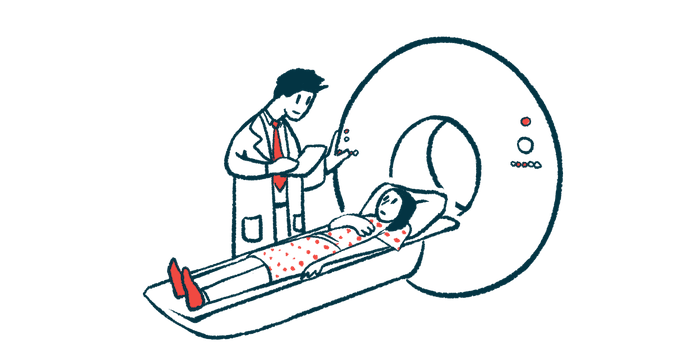Isturisa treatment helps in spotting Cushing’s pituitary tumor
Normalizing cortisol levels was key step in surgical success: Study

A woman in the U.K. with Cushing’s disease was successfully treated with Isturisa (osilodrostat), which helped lower her cortisol levels to normal and later allowed doctors to clearly identify her pituitary tumor on an MRI scan for surgical removal.
If validated, “this approach could refine surgical planning and potentially lead to better surgical success and durable clinical outcomes,” researchers wrote in “Enhanced Radiological Detection of a Corticotroph Adenoma Following Treatment With Osilodrostat,” which was published in JCEM Case Reports.
Cushing’s disease is caused by a tumor in the brain’s pituitary gland. A pituitary tumor can release high amounts of adrenocorticotropic hormone (ACTH). This hormone signals the adrenal glands on the kidneys to produce cortisol, resulting in Cushing’s symptoms. In adults, the symptoms commonly include weight gain and a buildup of fat in certain areas of the body.
The first-line treatment is usually endoscopic transsphenoidal surgery. This procedure removes the pituitary tumor through a hollow space behind the nose, with minimal damage to the surrounding tissues. However, MRI scans can miss the tumor in about one-third of patients, reducing the chances of remission.
A complex path to Cushing’s diagnosis
A 42-year-old woman had a seven-year history of symptoms that included weight gain around her abdomen and face, acne, high blood pressure, depression, and muscle weakness. During the COVID-19 pandemic, her conditioned worsened, leaving her constantly tired, tearful, and unable to care for her child or work.
On examination, she was overweight and showed easy bruising and muscle wasting — all signs of excess cortisol. Doctors suspected Cushing’s, and tests confirmed she had very high cortisol levels in her blood and urine, even after taking dexamethasone — a medicine that usually lowers cortisol.
Her ACTH levels were also above normal. To rule out tumors outside the pituitary, doctors measured ACTH from veins draining the pituitary. The test confirmed excess levels of this hormone originating in the pituitary, rather than elsewhere in the body.
Initial MRI scans of her pituitary were inconclusive; no clear tumor was visible. The scan was complicated by an unusual position of her carotid artery, which distorted the normal anatomy of the pituitary. Since surgery works best when the tumor can be clearly seen, doctors first prescribed medication to lower her cortisol levels.
The woman started off-label treatment with metyrapone, a medication that blocks cortisol production. However, even at high doses, she only achieved partial improvement and experienced nausea and malaise. She was then switched to Isturisa. This medication worked rapidly, normalizing her cortisol levels within five weeks.
After three months, she underwent a specialized imaging test that combines functional imaging with high-resolution MRI to locate an active tumor. This revealed a small, active lesion on the right side of the pituitary. Conventional MRI still did not show an obvious tumor, highlighting how functional imaging can detect tumors missed by standard scans.
Surgery success and remission
She then underwent transsphenoidal surgery to remove the tumor. When doctors examined the tissue under a microscope, they didn’t find changes typical of a tumor. Some cells had changes called Crooke’s hyaline, which are sometimes associated with cortisol overproduction. The low proliferation index indicated the tissue was not rapidly growing.
Despite the lack of histological confirmation, she entered complete clinical and biochemical remission. Her early postoperative cortisol was low, so she started prednisolone, a replacement steroid, to prevent adrenal insufficiency. The prednisolone was gradually tapered over six months as her own adrenal function recovered, confirmed by blood tests.
More than two years after surgery, she showed no signs of Cushing’s disease. She had lost weight, and both her cortisol and ACTH levels remained normal. Late-night salivary cortisol tests and dexamethasone suppression testing confirmed her cortisol regulation was normal.
According to the research team, this case demonstrates that when a pituitary tumor is not visible on MRI, temporarily normalizing cortisol with medications like Isturisa can improve the success of functional imaging in pinpointing the tumor. Early medical therapy allowed for safe surgical removal of the tumor, leading to long-term remission.
The woman benefited from a combination of careful biochemical assessment, medical therapy to control her cortisol, advanced imaging to locate the tumor, and minimally invasive surgery, said the researchers, who noted her case highlights the importance of a stepwise, patient-centered approach in managing challenging cases of Cushing’s disease.







